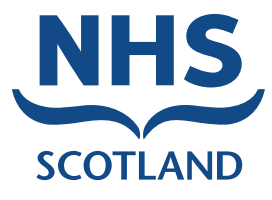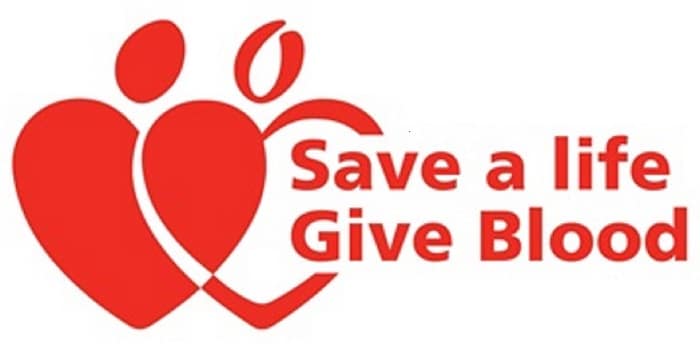As a Health and Wellbeing organisation, we understand the importance of Improving Lives, and Putting People First. We also understand just how crucial blood donations can be. One of our colleagues, Luke Russell, who works at our Bank Top Farm Support Centre has shared his experience with us. This gives us a valuable insight and understanding into what it is like to give blood. Not only that, but he has shared his thoughts into the changes he noticed whilst donating during COVID-19.
We hope that in sharing this, it encourages and inspires other people to do something amazing and help save lives!
By Luke Russell, Business Development and Marketing Assistant
I have donated blood 14 times, now. This is the first time I have donated during lockdown, and I’ll be honest I cancelled and rescheduled it twice. It has taken me over a month to work up the courage to complete one appointment. Selfish, perhaps, but I was anxious. I was worried about the lockdown, social distancing measures, the unfamiliar protocols in place at the donor centre, and also about the staff as I didn’t have the recommended protective face mask.
However, I have finally donated again – and I will do once more when my next available session arrives in September. I want to share with you the differences I experienced during this donation. But, more importantly, I want to ask you to consider donating; but only if this is something you feel you are able to do.
The first time I donated blood was when I was 17 and still living in Sunderland. It was with my grandad, a long-time donor, as he was saved by a blood transfusion when he was younger. More than anything, curiosity about my blood type was the driving factor behind my decision – I just wanted to know. I was still in sixth form. I had chips and gravy for lunch, and supernoodles for tea – the epitome of health. My food intake is very important here. I was nervous, but excited. I didn’t have an appointment, but the nurses were all really kind and managed to fit me in. The donation lasted about 10 minutes, and I went to the rest area where I was offered biscuits and juice. I politely declined.
Have you ever experienced serious tiredness and fatigue? The kind where your vision wobbles and the room feels uneasy? I had that, muttered something along the lines of “maybe a biscuit”, and then I woke up on the floor 10 seconds later with my legs resting on a chair in an upright position.
“Did I faint?” was the first thing I asked. Obviously I fainted. It was quite a novel thing for me, I had never fainted before, and was almost thankful for the experience. I then accepted the offer of a biscuit and some juice. Shortbread and blackcurrant to re-energize my soul! My grandad got me a McDonalds afterwards and it was great, and I felt fine. If anything, a fun story to tell people about my first donation. And a welcoming note forever on my donation records that I am occasionally asked about.
Once I found out that I was a universal donor, and a baby donor, I felt obliged to continue. This is because my blood type is O-, and is labelled neo_rr. I asked what this meant during my first ever donation in Liverpool, and discovered my blood didn’t have CMV antibodies, which were devastatingly harmful for new born babies. But, there was a long period of time when I didn’t donate. I left Sunderland for Liverpool to study at University, and I didn’t feel comfortable to donate until my third year in the city. Now, after moving to West Yorkshire a year and a half ago I donate as often as I am able to.
The needles hurts. It feels like a really long, uncomfortable nip from a hand with teeth like a python. But it feels good, nice almost. However, am jumping ahead – I’ll summarise my experience for you pre and post-covid. I’ll be honest, there weren’t as many changes as I expected.
Pre-COVID:
I would usually arrive to the donor centre via public transport. A nice train journey and a leisurely stroll over, I would always arrive 5 or 10 minutes early. That way, it gave me enough time to comfortably drink 2 pints of water in the waiting room and read through all of the literature. I would always forget to fill my form out pre-arrival too, so I always had to do that. It wouldn’t be far amiss for around another 4 people to be waiting for their appointment. The blood and platelet beds would be full of regular donors. From the top of my head, there used to be around 5 of each bed in total.
When the time came, my name would be called and I would be taken to a little room. Here, they would run through my form and ask some pre-qualifying questions. They would prick my finger, take a small amount of blood and drop it in a solution to test the iron level – if it sinks at a good pace, you have plenty.
After this, I would be taken to an available bed, and the equipment would be set up. As I am left-handed, I prefer to donate from my right arm, which is a bit of a faff for the nurses as they have to swap the whole bed around! My pulse is taken, a vein is sought out, and the target area is cleaned for 30 seconds. The needle is put in.
Now, the first time I ever donated I chose to look out of curiosity. It was interesting to see the needle puncture the skin and the blood to immediately start flowing through the tubing and into (and forgive my lack of terminology here): the test tube, the test pouch (to make sure it is flowing fast enough), and then the big pouch where they collect your donation. I no longer choose to look. This is due to a mental association that I expect it to hurt less, which it doesn’t. And I know I referenced a python bite before, but it doesn’t really hurt much at all. It’s actually more like a continuous nip from a puppy that is teething. Delicate and annoying. In reality, I think I look away so that I don’t accidentally flinch and botch the insertion.
Around 10 minutes pass, and my donation is complete. But, only after regular hand exercises, bum clenches, and leg raising to keep the blood pumping. The needle is removed, pressure is applied, a plaster put on, and the kind nurses recount the next steps to take should any complications arise. I amble to the snack station and optimistically scoff shortbread, and down some blackcurrant juice. I have learnt over time that it takes me around 5 or 10 minutes to feel able enough to get going. But, should anything feel amiss, the nurses are on hand to make sure you are fine.
Donation complete, you can sign up for your next session there and then. I opt to do it from the convenience of my phone closer to the time – but whatever suits. I get on with my day, and treat myself to an unhealthy meal. I also use the donation as a bit of an excuse to get out of doing any chores, or activities I don’t feel like doing that day! But don’t let anyone I know in on that secret…
During COVID:
As I alluded to, nothing particularly changed. I had to attend my donation at the exact time of my appointment to limit the amount of people in the waiting area at any one time. Texts before the donation prompted me to wear a facemask – an obtrusive annoyance for anyone who wears glasses. My choice was either: be blind from steam, or be blind from lack of glasses.
Upon arrival, I was asked several questions about covid, from a safe marked out distance. I was instructed to go to the toilet before entering, to wash my hands. I was then given alcohol hand wash to further clean my hands. This time, the waiting area was just myself and one other person. There were only 3 donation beds, 3 platelet beds, and no snack area.
I was called into the room by a nurse, and a trainee. After speaking to the trainee I learned that they have been fast-racked to support with the new protocols in place as a result of covid. My donation took a little bit longer in total, due to the limited number of beds and the trainee running through everything whilst supervised. I didn’t mind though. If anything, I hope I was helpful and a useful patient for the trainees learning.
I asked about my mask and whether it was necessary. The staff preferred to see our faces to read whether we looked okay. I obliged, and took my mask off much to the joy of my overall vision. I was again given hand sanitizer. My donation took a total of 7 minutes and 6 seconds. My fastest to date, I think! The two nurses stayed by my bed the whole time – something that doesn’t usually happen. I learned it was due to each donor having two nurses assigned to them due to the limited number of beds.
As there was no snack station, blackcurrant and digestives were brought to my bedside. Not my usual choice of biscuit, but I left it up to the nurses to surprise me. I happily worked my way through these whilst chatting to the nurses. Crucially, with my facemask off, the lead nurse noticed I looked hot, flustered and pale after my donation and thus I was advised to sit there a bit longer than I usually would. Had my mask not been off, he wouldn’t have noticed this. I admit, I was roasting – but I didn’t feel light headed or anything. To ensure I was okay, I waited for 15 minutes until I left and I drank plenty of fluids.
Overall, apart from having to drive back, my experiences were largely similar. The staff were welcoming. The donation was easy-going. And, crucially, I got out of all the chores I had to do over the weekend.
To find out if you’re able to donate, take a look here. It is a really valuable, worthwhile experience that can help benefit a lot of people’s lives! I hope my testimony sheds some light on what to expect and if you don’t already, please do consider donating.








